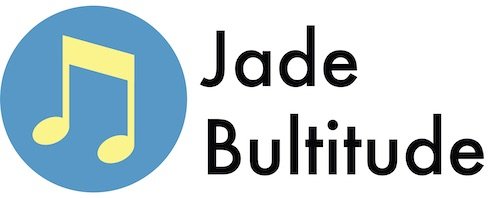In this article, you’ll learn how to construct the A sharp diminished triad as well as how to play it on piano and guitar.
We’ve also included sections on inversions for those that want a deeper understanding. Lastly, listen to some examples of popular songs that featured this triad.
Root, Flat 3rd and Flat 5th
- A# – root note
- C# – Minor 3rd above the root
- E – diminished 5th above the root


Before you read on make sure that you have a basic understanding of intervals. Intervals are vital for understanding how triads are built. Check out our guide to major, minor and perfect intervals for more on this.
A# diminished Triad on Piano
Below you can see how to play this triad on the keyboard or piano. This pattern of notes could also be played starting on any A sharp note.
However, the order of the notes must be the same:
- A# – lowest note
- C# – middle note
- E – highest note
This is called ‘root position’.
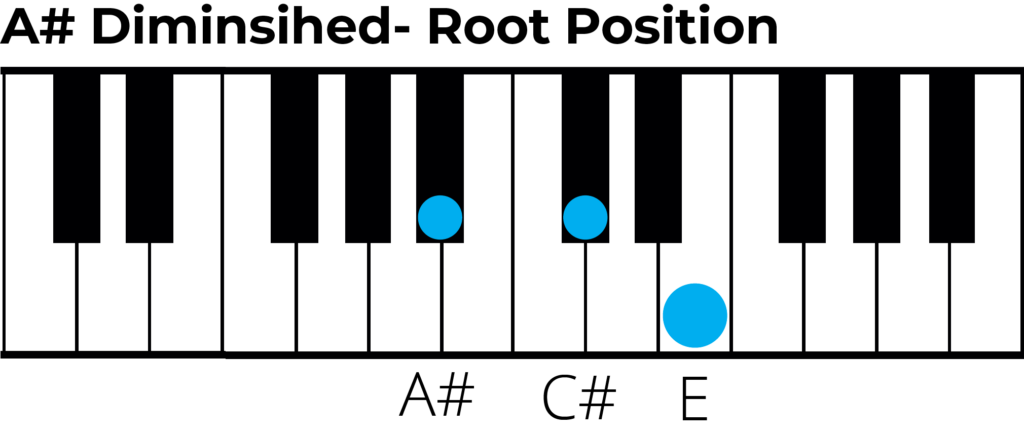
A# diminished Triad on Guitar
There are two simple positions that you can use to play an A sharp diminished triad on guitar. Both positions can also be slide up or down the neck to play different diminished triads.
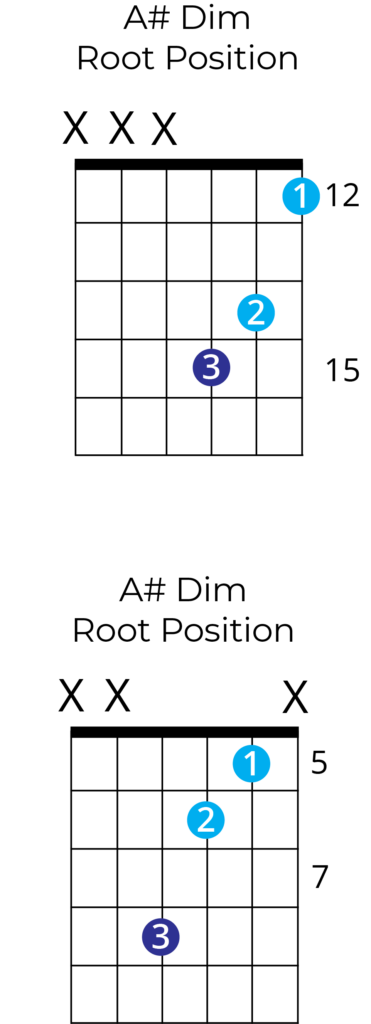
1st Inversion
A 1st inversion is where we take a triad but we start on the second note, which in this case is C#. We still keep the E above, but then the A# (or root) become the highest note.
This way of rearranging a triad gives us a different sound as the relative pitches of the three notes has changed.
- C# – min 3rd (lowest note)
- E – dim 5th (middle note)
- A# – root note (highest note)

1st inversion on Piano
On the piano we can play the 1st inversion of an A sharp diminished triad by starting on a C#. They play the E above and the A# above this.
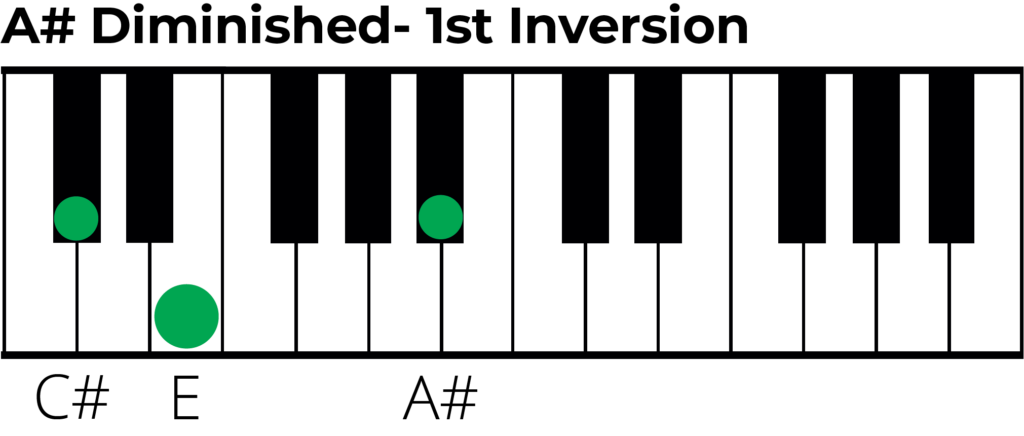
1st Inversion of Guitar
Below are the most common shapes for playing an A sharp diminished triad in the 1st inversion. Remember that we can only use certain shapes are the pitches of the three notes are important.
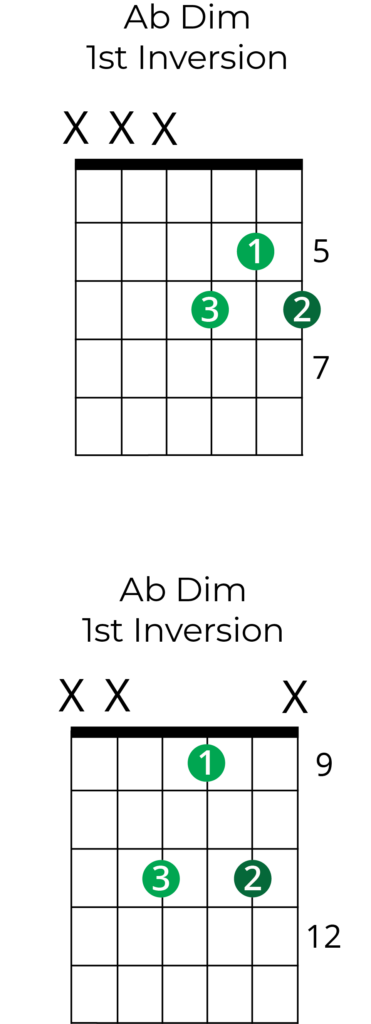
2nd Inversion
A 2nd inversion is where we take a triad but we start on the third note, which in this case is E. We still keep the A# above this as we did from the 1st inversion. Then the C# becomes the highest note in the chord.
- E – dim 5th (lowest note)
- A# – root note (middle note)
- C# – min 3rd (highest note)
We could construct a 2nd inversion starting on any E note in any octave. The only thing that must stay the same is that the we use the A# above and the C# above that.

2nd inversion on Piano
On the piano we can play the 2nd inversion of an A sharp diminished triad by starting on an E. They play the A# above and the C# above this.
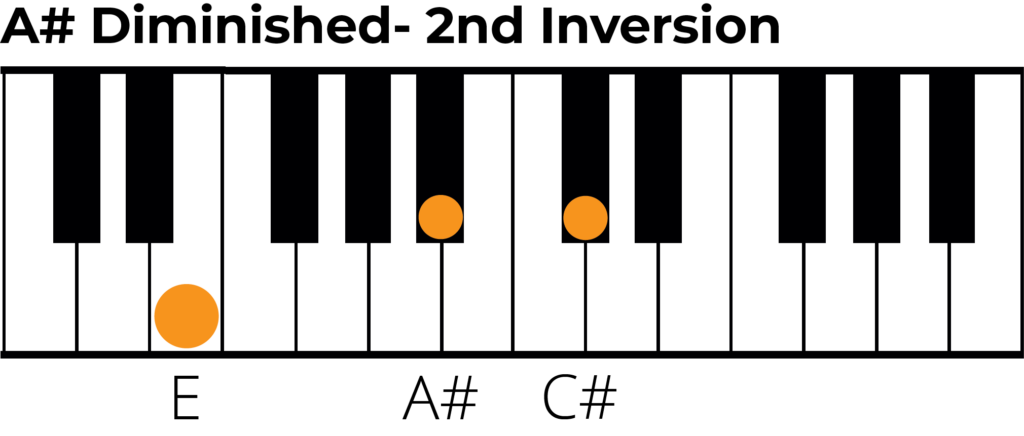
2nd Inversion of Guitar
Below are the most common shapes for playing an A sharp diminished triad in the 2nd inversion. Remember that we can only use certain shapes are the pitches of the three notes are important.
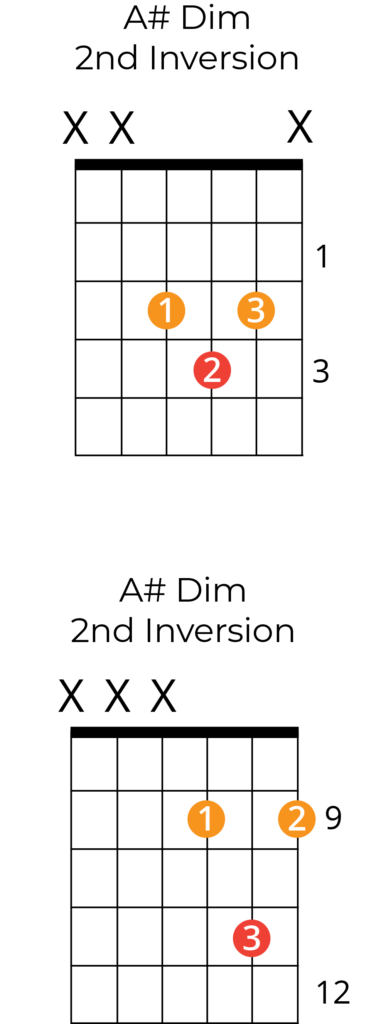
Keys that Include A Sharp Diminished Triad
You might be asking – what key do you find A sharp diminished triad in? Well, as you can see below, A# Dim is the second chord in the key of G# minor.

It is also the 7th chord in the key of B Major.

Famous Songs That Use Diminished Chords
When played in isolation, diminished chords have a distinctly dissonant sound. But this chords come into their own when seen as part of a chord progression. In the right progression, diminished chords at so much character and interest to a song.
Here’s 4 popular examples of diminished chords in action.
‘don’t Look Back in Anger’ – Oasis
The song is in C major and the bridge section moves from a G (the fifth chord in the key) and an Amin (the 6th chord in the key).
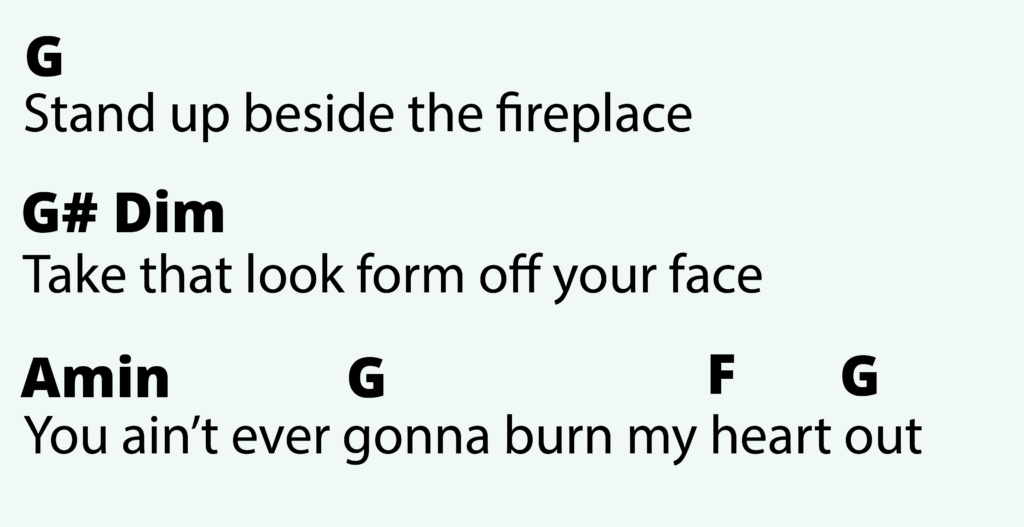
To make this transition more interesting, Noel Gallagher starts on G major then moves to G diminished before moving to the Amin. This provides some tension (the G dim) and release (the A Minor) give the bridge a more satisfying feel.
‘Bennie And The Jets’ – Elton John
In ‘Bennie and the Jets’ Elton John used a G diminished chord to move between the tonic chord (G) and the 2nd chord (Amin)

This gives a smooth transition that is more interesting that simply staying on the G major before moving to the A minor chord.
‘Bridge Over Troubled water’ – Simon & Garfunkel
In the chorus of ‘Bridge Over Troubled Water’, Simone and Garfunkel use a F#dim/A to give a sweet resolution to the tonic chord of Eb major.
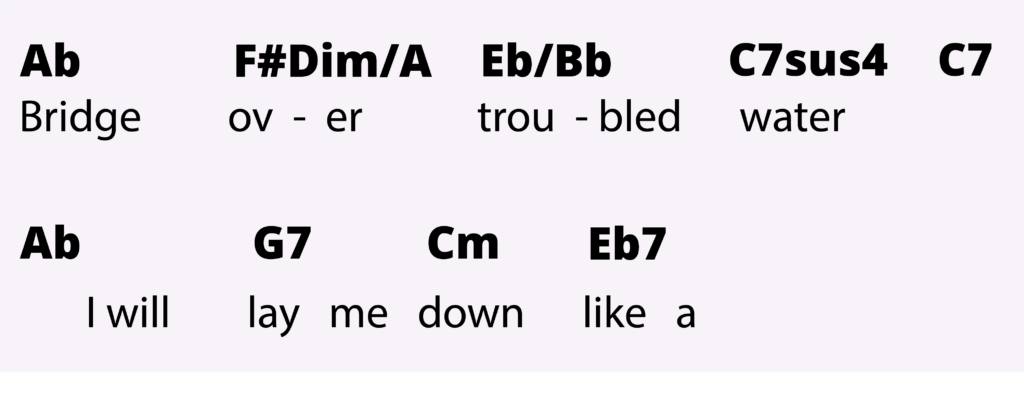
‘This love’ – Maroon 5
The hook to this song has clever used a Ddim7 chord which then resolves to the G/D chord.
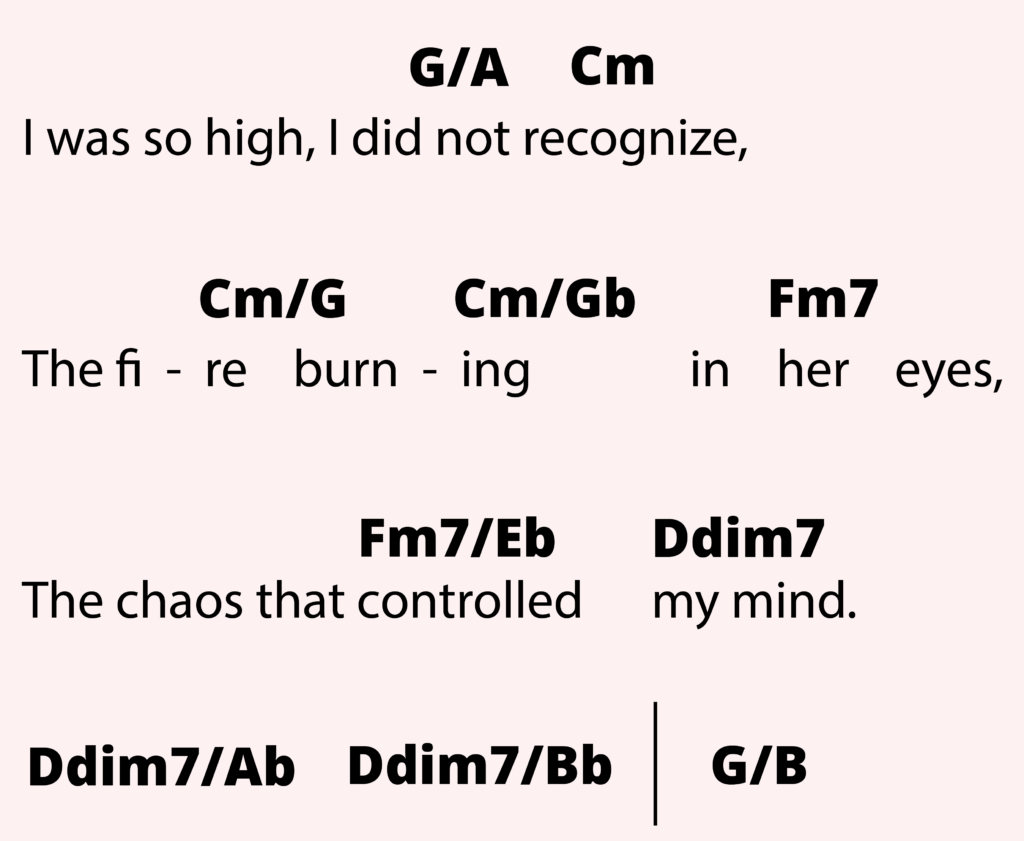
The funky addition notes added to the chords give a stepping movement that adds to the catchiness!
What’s next….?
- Learn how to construct the A sharp Major triad
- Swat up on your chord knowledge with our complete guide to chords.
